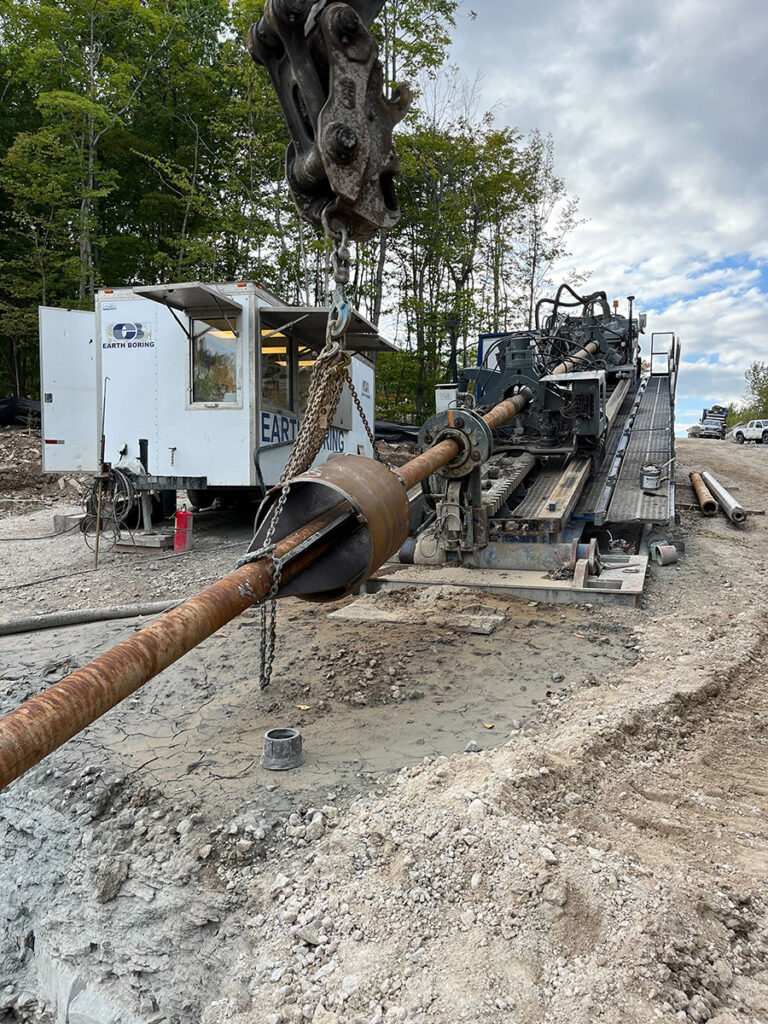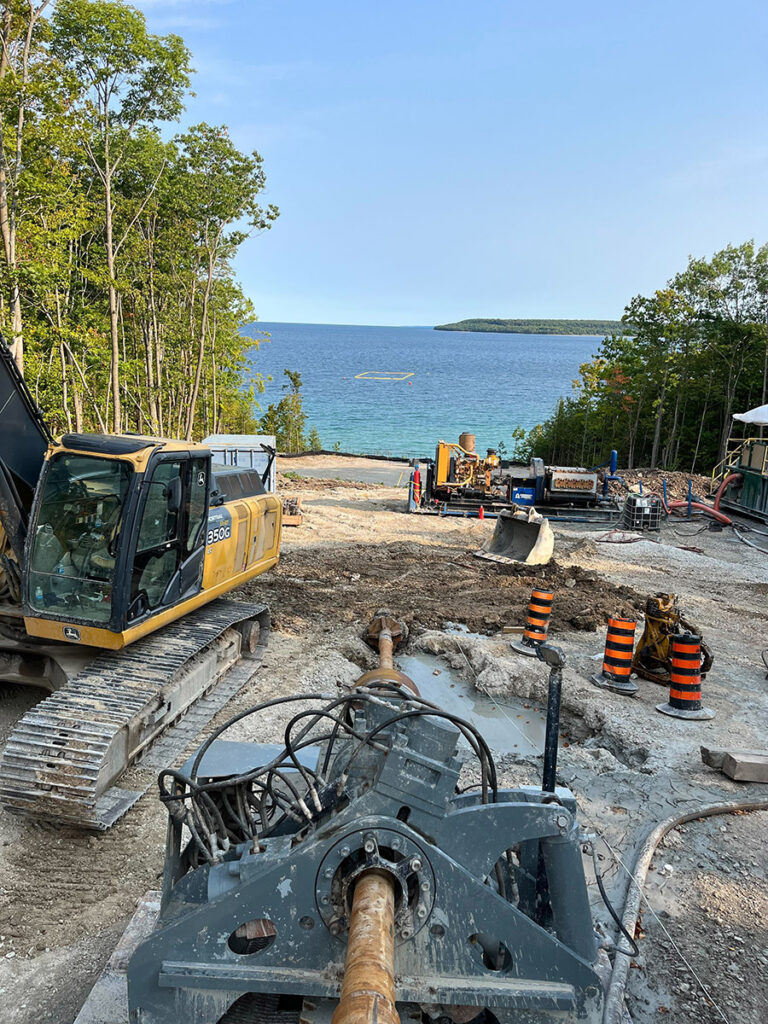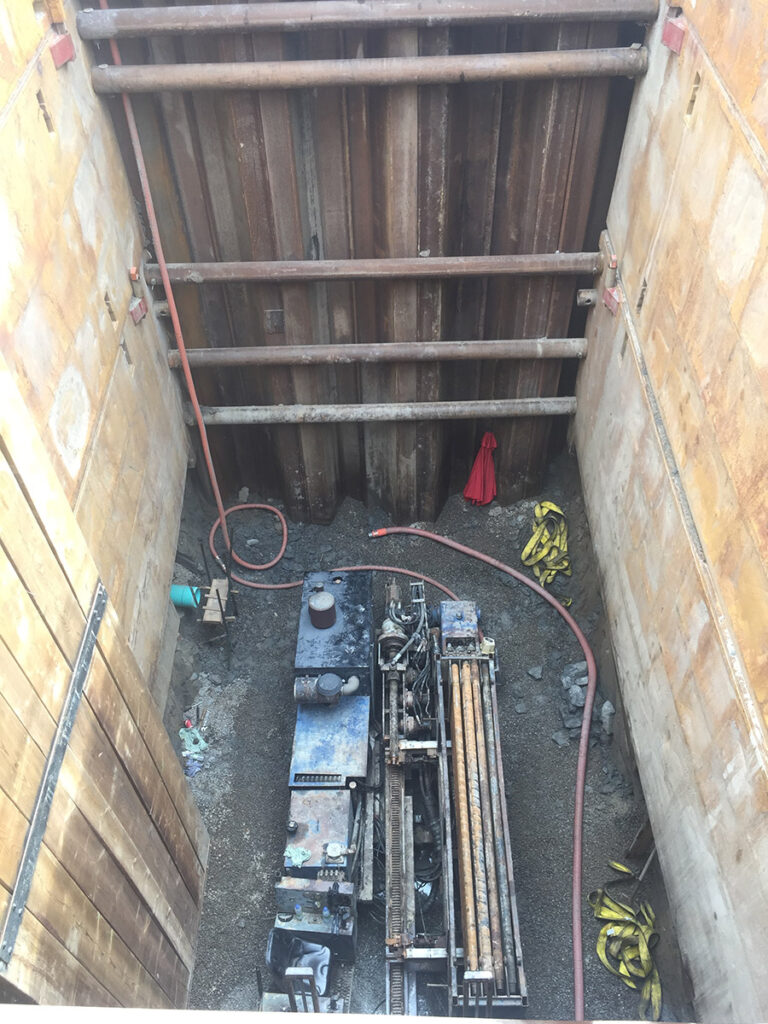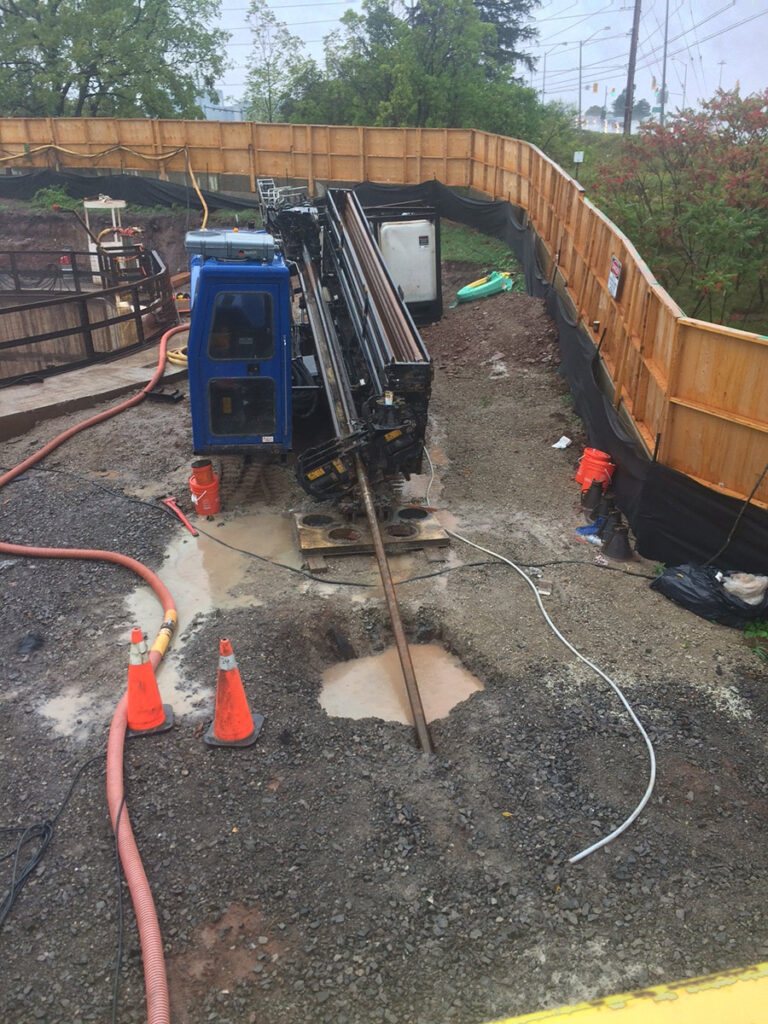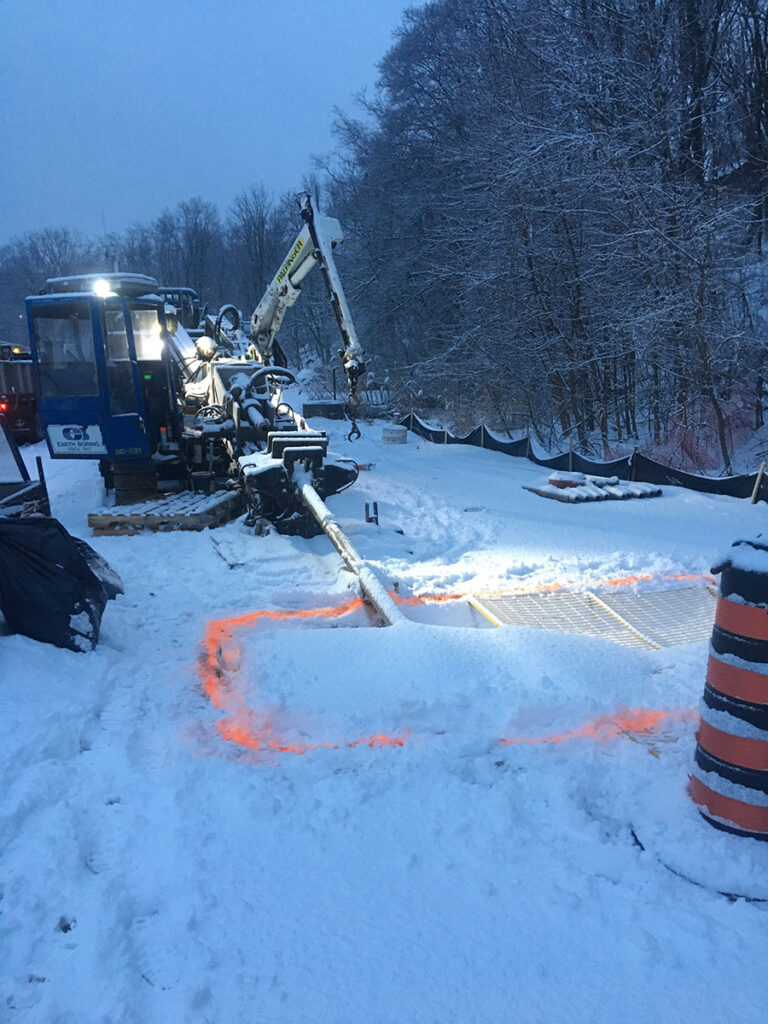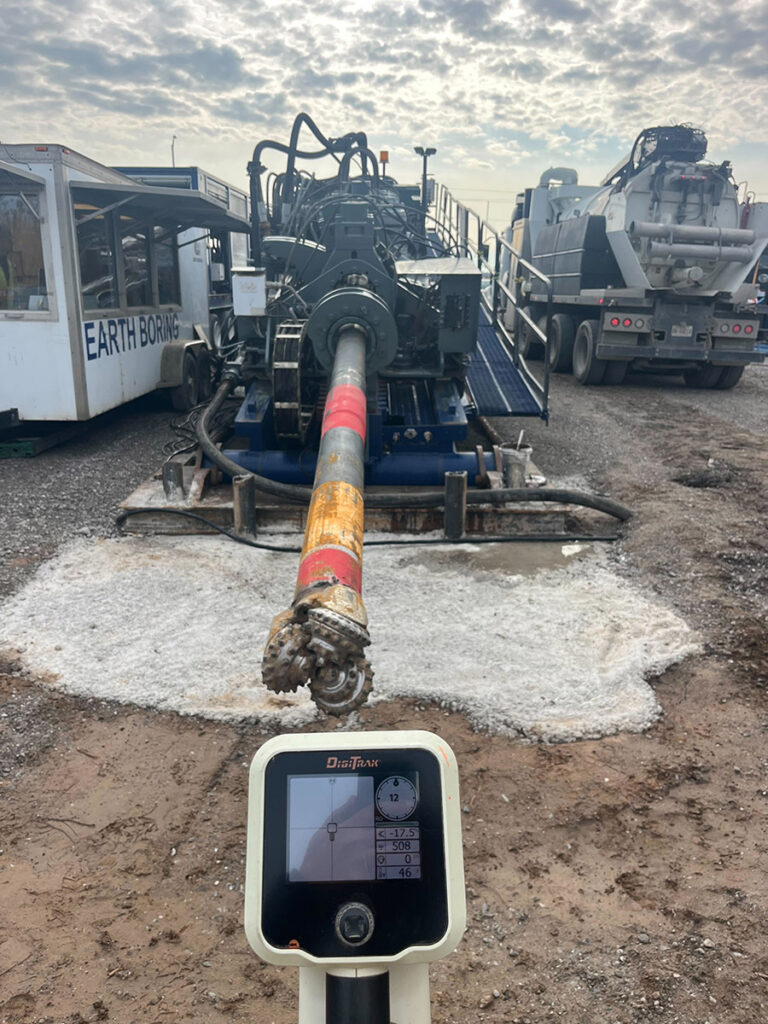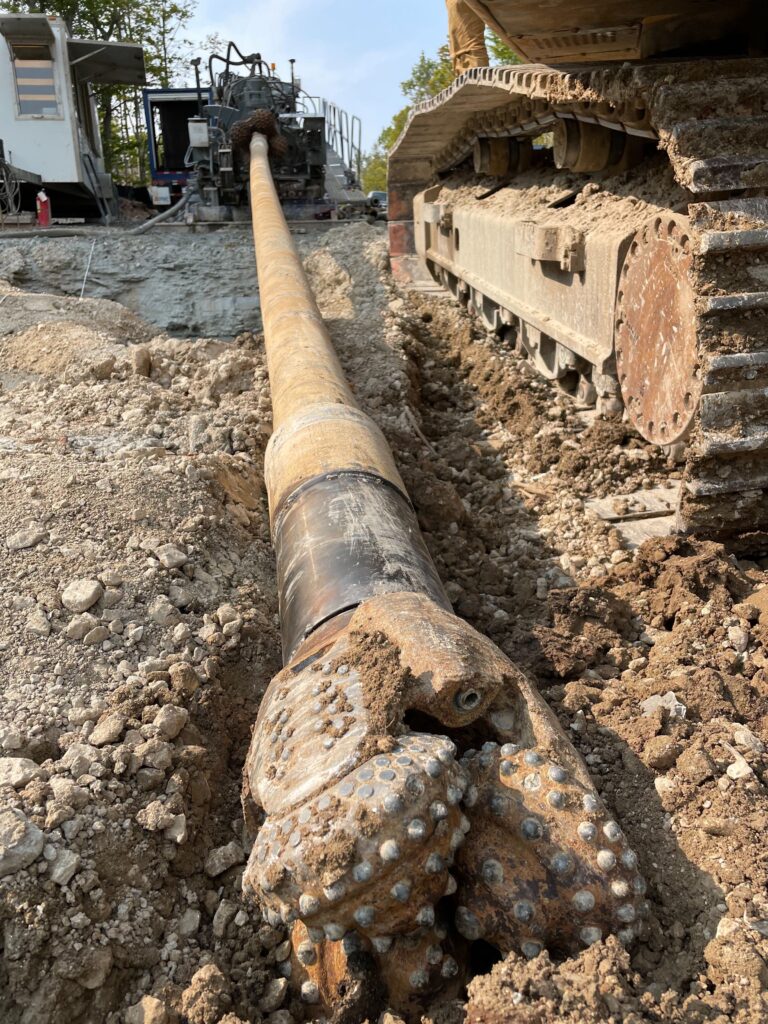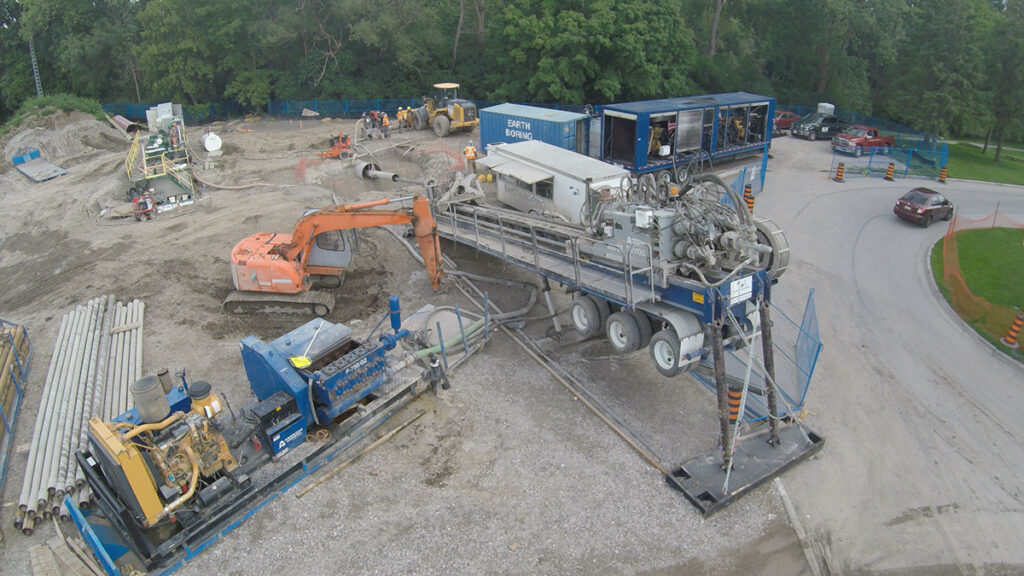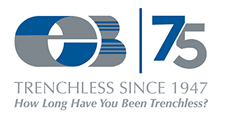Trenchless Technology has evolved since we started in 1947 and so have we. Entering the horizontal directional drilling (HDD) industry in the early 1990’s we can readily meet your project needs from 3/4″ (19mm) water services to 54″ (1375mm) steel casings. On grade gravity work? No problem, we specialize in on-grade HDD work.
Utilizing state of the art tracking technology and quality HDD equipment, we hit the bulls-eye every time! On-grade? Long Distance? Large Diameter? No problem.
Our HDD employees are the best in the trenchless industry and bring a professional, positive attitude and driven work ethic to every job. Our employees are solutions oriented and committed to the success of the job, the project, the company and customer alike. Our forces welcome challenges and excel at surpassing obstacles. Our clients have come to know and respect the abilities of our HDD field forces; they are an integral part of the success Earth Boring has enjoyed in the HDD industry.
Our horizontal directional drilling (HDD) supervisors have a extensive experience with directional drilling techniques with Earth Boring. Our employees are the best in the trenchless industry and bring a professional, positive attitude and driven work ethic to every job. Our employees are solutions oriented and committed to the success of the job, the project, the company and customer alike. Our forces welcome challenges and excel at surpassing obstacles. Our clients have come to know and respect the abilities of our HDD field forces; they are an integral part of the success Earth Boring has enjoyed in the HDD industry.
Contact Us to discuss your trenchless needs.
